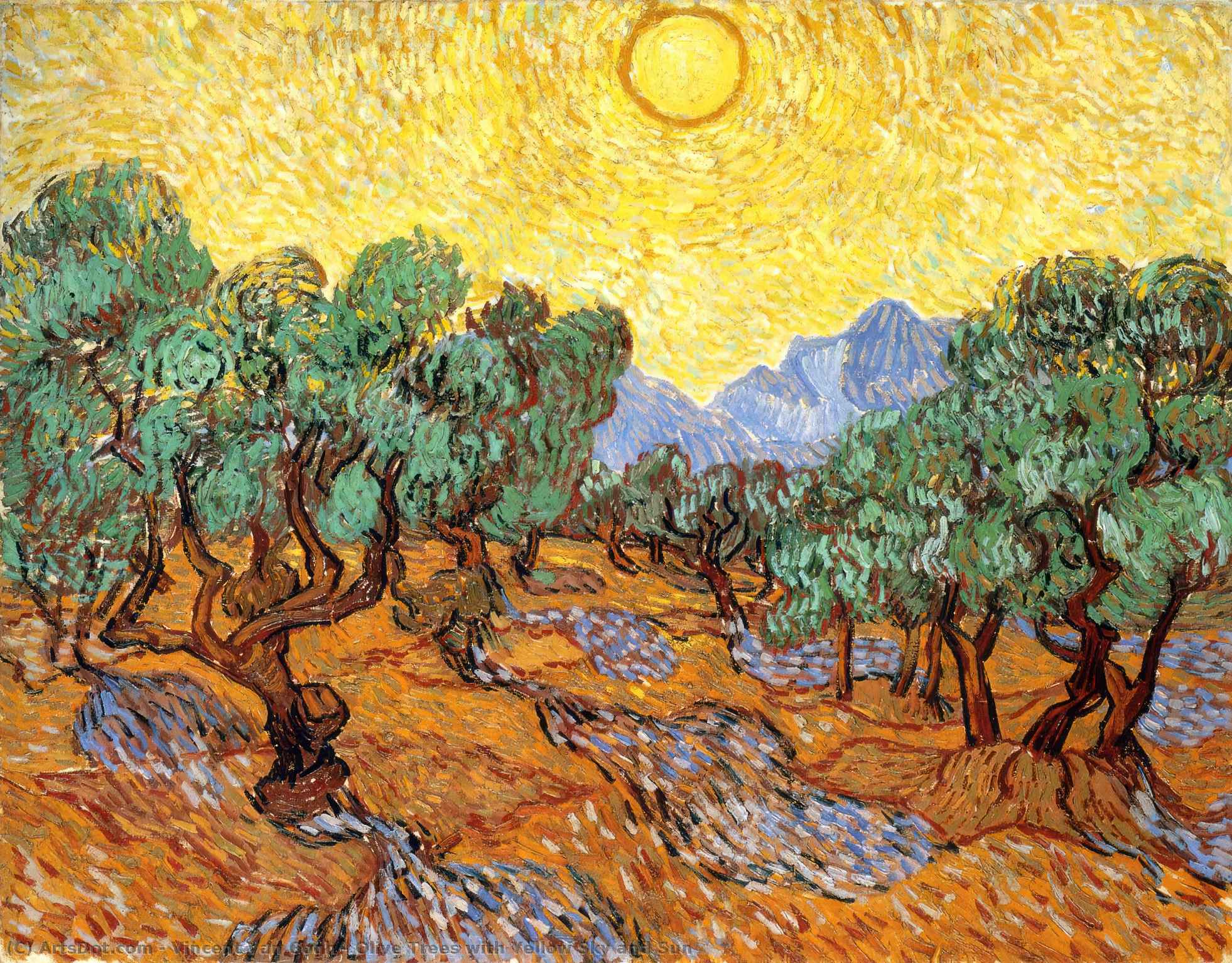Artist: Vincent Van Gogh
Style: Post-Impressionism
Date: 1889
Size: 92 x 73 cm
Museum: The Minneapolis Institute of Arts (United States)
Technique: Oil
Vincent van Gogh painted at least 18 paintings of olive trees, mostly in Saint-Rémy in 1889. At his own request, he lived at an asylum there from May 1889 through May 1890 painting the gardens of the asylum and, when he had permission to venture outside its walls, nearby olive trees, cypresses and wheat fields. One painting, Olive Trees in a Mountainous Landscape, was a complement to The Starry Night. The olive tree paintings had special significance for Van Gogh. A group in May 1889 represented life, the divine and the cycle of life while those from November 1889 arose out of Van Gogh's attempt to symbolize his feelings about Christ in Gethsemane. His paintings of olive pickers demonstrate the relationship between man and nature by depicting one of the cycles of life, harvesting or death. It is also an example of how individuals, through interaction with nature, can connect with the divine. Van Gogh found respite and relief in interaction with nature. When the series of olive tree paintings was made in 1889 Van Gogh was subject to illness and emotional turmoil, yet the paintings are among his finest works.
Artist |
|
|---|---|
Download |
|
Permissions |
Free for non commercial use. See below. |
Vincent Van Gogh – Most viewed artworks
|
This image (or other media file) is in the public domain because its copyright has expired. However - you may not use this image for commercial purposes and you may not alter the image or remove the watermark. This applies to the United States, Canada, the European Union and those countries with a copyright term of life of the author plus 70 years.
|

 Note that a few countries have copyright terms longer than 70 years: Mexico has 100 years, Colombia has 80 years, and Guatemala and Samoa have 75 years. This image may
not be in the public domain in these countries, which moreover do not implement the
Note that a few countries have copyright terms longer than 70 years: Mexico has 100 years, Colombia has 80 years, and Guatemala and Samoa have 75 years. This image may
not be in the public domain in these countries, which moreover do not implement the